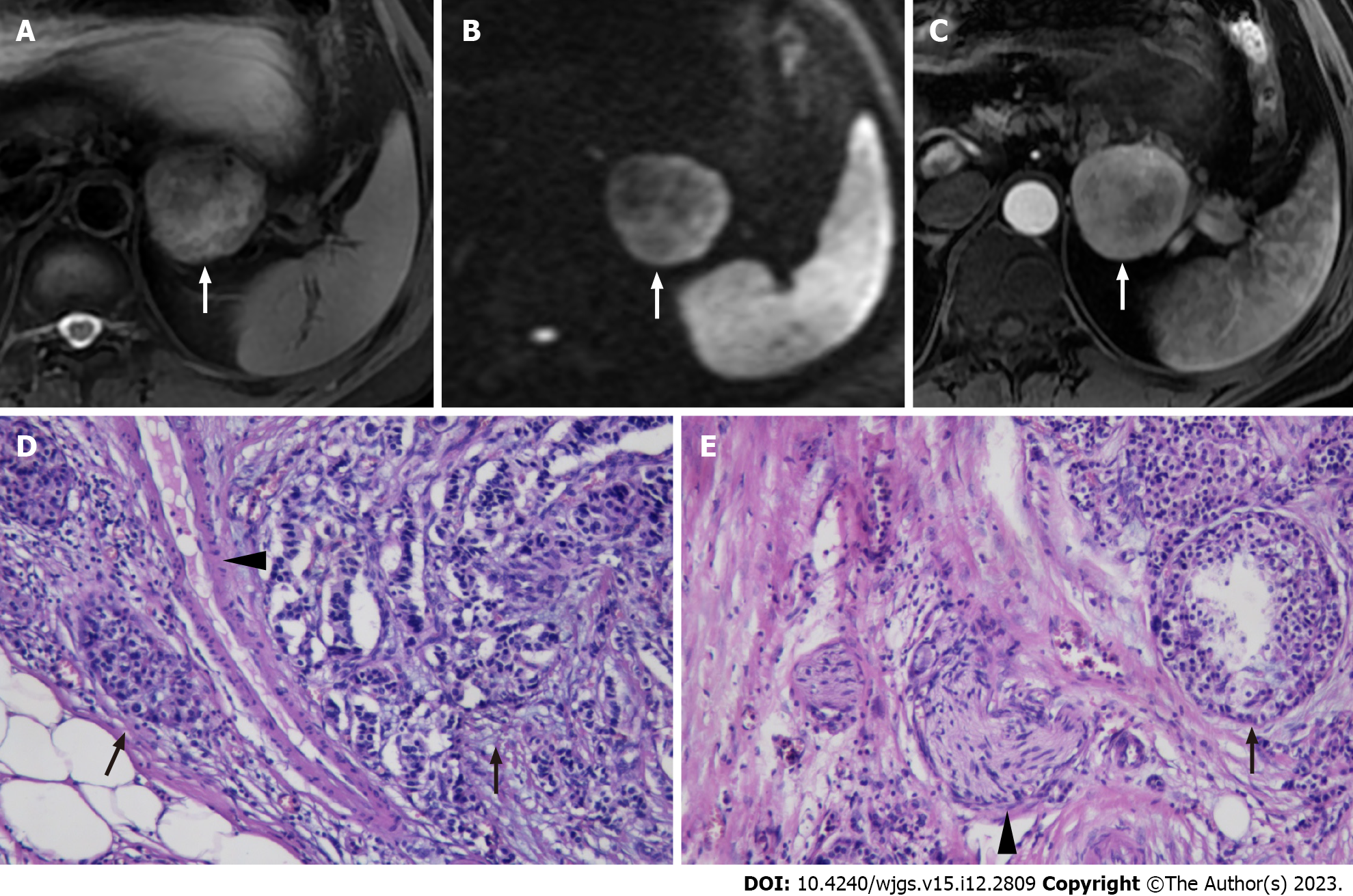Copyright
©The Author(s) 2023.
World J Gastrointest Surg. Dec 27, 2023; 15(12): 2809-2819
Published online Dec 27, 2023. doi: 10.4240/wjgs.v15.i12.2809
Published online Dec 27, 2023. doi: 10.4240/wjgs.v15.i12.2809
Figure 2 A 52-year-old woman with pancreatic neuroendocrine tumor grade 1 underwent magnetic resonance imaging.
A-C: Magnetic resonance imaging (MRI) images revealed the regular tumor characteristics on T2-weighted imaging (A), diffusion-weighted imaging (B) and arterial phase (C) of contrast enhanced images. A round, well demarcated tumor with smooth contours is shown on MRIs (white arrow). The tumor pancreas interface is clear; D and E: Hematoxylin-eosin staining (× 400) reveal that the space between the vascular and nerve (black arrow) and the tumor (black arrow) is clear.
- Citation: Liu YL, Zhu HB, Chen ML, Sun W, Li XT, Sun YS. Prediction of the lymphatic, microvascular, and perineural invasion of pancreatic neuroendocrine tumors using preoperative magnetic resonance imaging. World J Gastrointest Surg 2023; 15(12): 2809-2819
- URL: https://www.wjgnet.com/1948-9366/full/v15/i12/2809.htm
- DOI: https://dx.doi.org/10.4240/wjgs.v15.i12.2809









